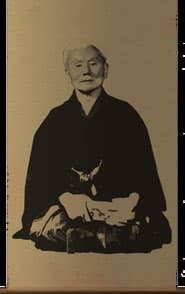


Traditional Martial Arts
Traditional Martial Arts are practitioner communities devoted to martial systems rooted in cultural heritage, emphasizing disciplined training, formal techniques, and lineage-based instruction.
Statistics
Summary
Lineage Reverence
Insider PerspectiveRitual Hierarchy
Social NormsTradition-Modernity Tension
Opinion ShiftsEmbodied Identity
Identity MarkersKarate Dojos
Local and international communities centered around traditional Japanese karate schools and their lineages.
Taekwondo Schools
Practitioner groups focused on Korean martial arts, often organized by federation or style.
Kung Fu Associations
Communities dedicated to Chinese martial arts, emphasizing lineage, forms, and cultural heritage.
Aikido & Judo Clubs
Groups practicing Japanese grappling and self-defense arts, often with strong ties to formal organizations.
Martial Arts Instructors
Networks of teachers and masters sharing pedagogy, curriculum, and school management advice.
Martial Arts Historians & Preservationists
Enthusiasts and scholars focused on the history, philosophy, and preservation of traditional martial arts systems.
Statistics and Demographics
Traditional martial arts communities primarily engage in dojos, gyms, and training halls for hands-on instruction and practice.
Formal classes and workshops are central to structured learning, skill progression, and community building in martial arts.
Meetup is widely used to organize local martial arts groups, seminars, and special training events, facilitating offline connections.
Insider Knowledge
'Kiai louder, not harder!'
'Karateka never say ‘ouch’—only ‘hai’!','
„Sensei ni rei“
„Osu!“
„Senpai-kohai“
„Dojo kun“
Always bow upon entering and leaving the dojo.
Address seniors as 'Sensei' or by rank, never by first name.
Keep your gi/dobok clean and neat.
Do not show up late to training without notifying.
Hiroshi, 52
Martial ArtistmaleHiroshi is a seasoned practitioner who has dedicated over 30 years to mastering a traditional Japanese martial art passed down through his family lineage.
Motivations
- Preserving cultural heritage and lineage
- Achieving mastery through disciplined training
- Teaching and mentoring younger generations
Challenges
- Balancing modern life demands with rigorous training
- Combating misconceptions about traditional martial arts' relevance
- Finding genuine places to practice authentic techniques
Platforms
Insights & Background
First Steps & Resources
Research Martial Arts Styles
Visit Local Dojos or Schools
Attend a Trial Class
Research Martial Arts Styles
Visit Local Dojos or Schools
Attend a Trial Class
Acquire Basic Training Gear
Learn Foundational Techniques and Etiquette
„First bow into the dojo followed by introductions with rank and style.“
„Offering a small gift or token when meeting the master.“
Disrespecting the senpai-kohai hierarchy by ignoring seniors’ advice.
Focusing only on sparring and neglecting kata/forms.
Facts
In Asia, traditional martial arts are deeply linked to cultural rituals, spiritual beliefs, and local lineage, often taught in family-run dojos.
European practitioners often blend traditional practices with modern sport competition rules, while valuing cultural authenticity.

























